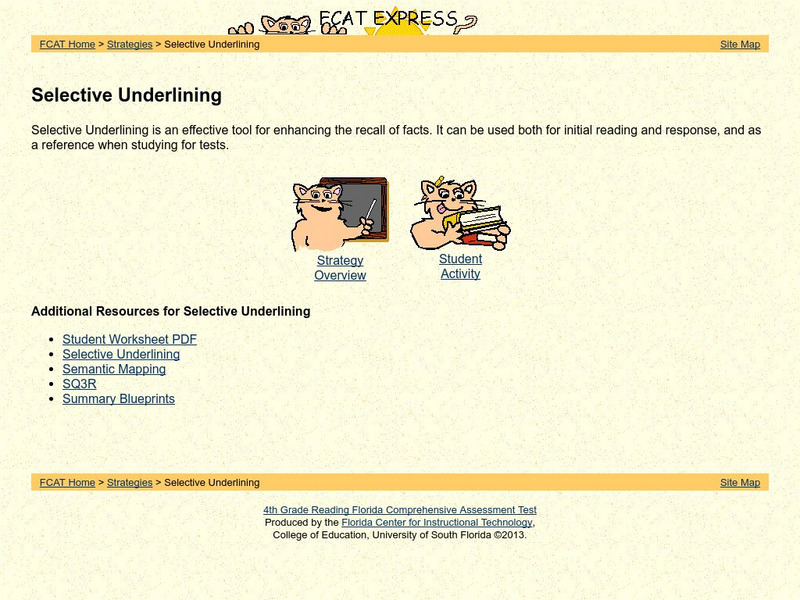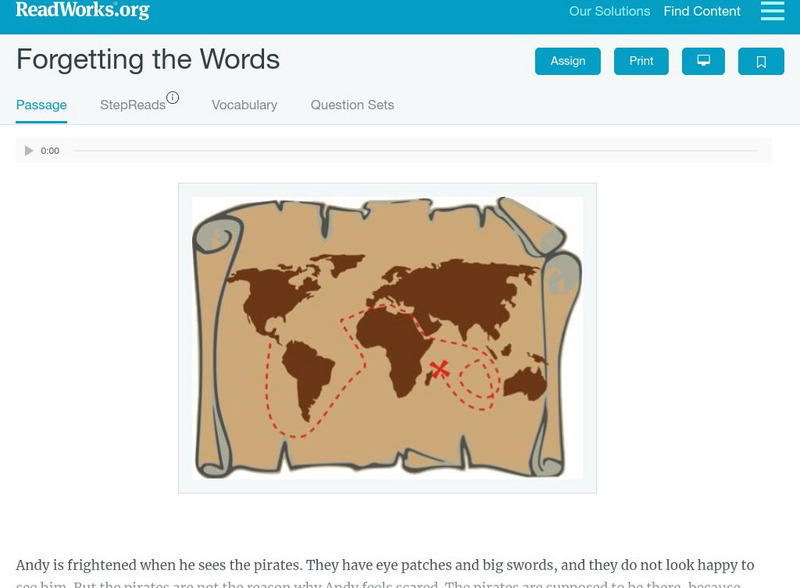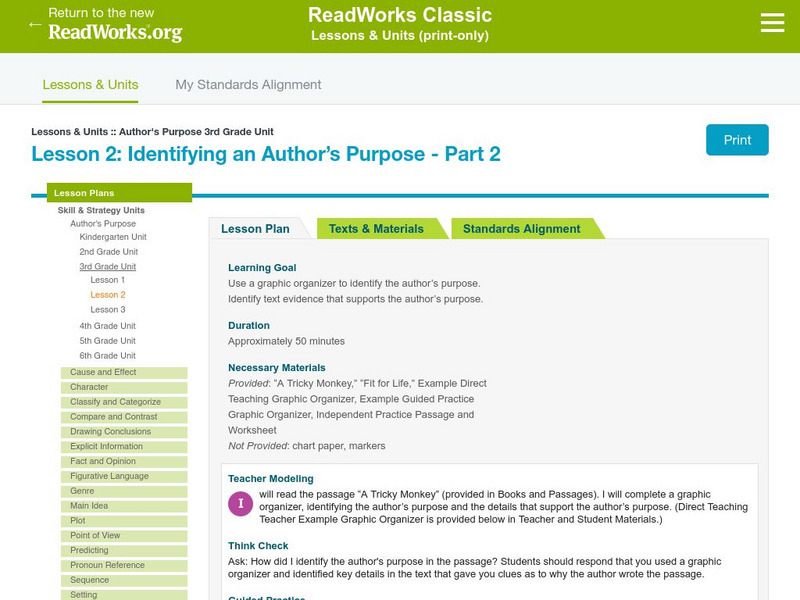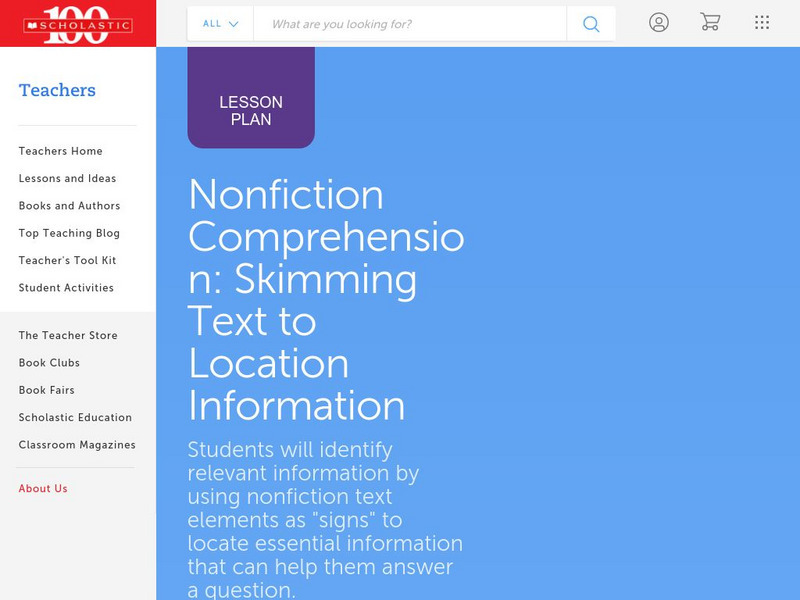Curated OER
A Different View
Readers need to understand how their personal view point may differ or change how they see the view point found in a written text. Third graders read two informational pieces and fill out a graphic organizer to help them differentiate...
Curated OER
Mighty Earth Movers
Note that although the publisher lists almost all of the Common Core standards for both math and language arts, you will most likely want to take the general topic and choose which area to focus on. Regarding math, pupils measure worms...
McGraw Hill
Mc Graw Hill Education: Grade 3: Treasures: Practice Book O [Pdf]
Help third graders reinforce their understanding of reading skills, vocabulary acquisition, phonemic awareness, and sight words with the pages in this 230-page workbook. This workbook is designed to supplement the stories from Grade 3...
University of South Florida
Fcat Express: Teaching Strategies (Reading) [Pdf]
Printable, fifty-five page PDF file of a staff development manual containing strategies for teaching reading. Includes chapters on vocabulary, main ideas and supporting details, author's purpose, chronological order, plot and conflict...
University of South Florida
Fcat Express: Semantic Feature Analysis
Site provides extensive assistance in preparing 4th grade students for Florida Comprehensive Assessment Test. This section on semantic features helps students recognize supporting details as they read.
University of South Florida
Fcat Express: Selective Underlining
Site provides extensive assistance in preparing 4th grade students for Florida Comprehensive Assessment Test. This section focuses on identifying main ideas and significant details by selectively underlining them in a text.
University of South Florida
Fcat Express: Cause and Effect
Site provides extensive assistance in preparing 4th grade students for Florida Comprehensive Assessment Test. This section helps students identify cause and effect in literature.
University of Houston
University of Houston: Extra! Extra! What's the Big Idea?!
Get the feel of running a newspaper by selecting articles and pictures. If you are interested in checking out real newspapers, there is a clickable list of online newspapers for younger readers.
Annenberg Foundation
Annenberg Learner: Conversations in Literature
A research based workshop by Judith Langer on bringing the joy of reading literature to your class. An excellent professional development resource, with eight videos on demand. Topics include Responding as Readers, Objectifying the Text,...
Read Works
Read Works: Passages: Forgetting the Words
[Free Registration/Login Required] Students read a fiction text about a boy named Andy who has a part in the school play and answer questions about comprehension, conflict, inferencing, main idea, literary devices, and more. Links to a...
Read Works
Read Works: Passages: Lessons From Fishing
[Free Registration/Login Required] Students read a fiction text about a boy named Morgan who loved to fish and answer questions about comprehension, comparing details, supporting details, main idea, vocabulary, and more. Links to a...
Books in the Classroom
Carol Hurst's Children's Literature Site: Looking Critically at Picture Books
This site describes several ideas and activities to use with picture books and intermediate/middle school age students. Specific title to use are also given.
Annenberg Foundation
Annenberg Learner: Literature: Describing Setting
Short explanation of setting as a literary term. Written in the context of "What makes a good short story?" A link at the bottom of the page leads to additional information about setting.
Read Works
Read Works: 3rd Grade: Author's Purpose: Lesson 2
[Free Registration/Login Required] This lesson plan helps students learn to identify an author's purpose.
Read Works
Read Works: 3rd Grade: Using Compare and Contrast Keywords: Lesson 1
[Free Registration/Login Required] With this lesson plan, teachers can help students increase their understanding of what they read through the use of key words that compare and contrast.
Cengage Learning
National Geographic: Informational Text and Young Children [Pdf]
Research-based informative article on when, why and how to introduce and teach reading skills with informational texts to early-elementary students beginning as early as kindergarten.
Read Works
Read Works: Lesson: Author's Purpose: Cause and Effect Signal Words
[Free Registration/Login Required] With this lesson plan, students can learn how several authors can write about the same topic, but for different purposes.
Other
City College: Skills for Life: Reading for a Purpose
This resource offers 11 exercises with variety of everyday reading passages such as letters, recipes, classified ads, etc. Students read the passage and answer multiple choice questions about its purpose.
Utah Education Network
Uen: One True Story, Told Two Ways
Analyze the different perspectives presented by two authors telling the same story.
Better Lesson
Better Lesson: Examining Point of View
Who is telling the story? Students analyze whose eyes the reader is looking through. Students will learn that there is more to point of view than knowing who is telling the story. This lesson will teach them about the nuances of the...
Better Lesson
Better Lesson: Text Feature Diagrams
At the end of this lesson, learners will be able to identify and create diagrams associated with informational text. Included is a link to an eSpark video on diagrams, rules for group work, multiple examples of diagrams, and a...
Better Lesson
Better Lesson: Visual Representations in Informational Text
Students will look at examples of illustrations and diagrams in informational texts and discuss how each one helps enhance the text. Students gain the knowledge that sometimes a picture is worth a thousand words because a complex idea...
Utah Education Network
Uen: Cool Tools for Finding Information (Grade 3 4)
Identify text structures in various informational sources.
Scholastic
Scholastic: Lesson Plan for Nonfiction Comprehension: Skimming Text
Build comprehension by developing reading strategies for use with nonfiction text. This lesson focuses on teaching students to recognize text elements as clues to help them quickly locate key information in text.


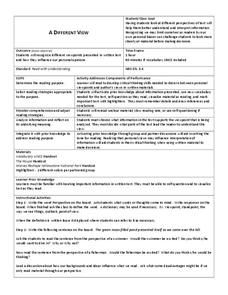

![Mc Graw Hill Education: Grade 3: Treasures: Practice Book O [Pdf] eBook Mc Graw Hill Education: Grade 3: Treasures: Practice Book O [Pdf] eBook](https://content.lessonplanet.com/knovation/original/18012-c3e737018f8e4e0cc690417159b28bc9.jpg?1661551628)
![Fcat Express: Teaching Strategies (Reading) [Pdf] Study Guide Fcat Express: Teaching Strategies (Reading) [Pdf] Study Guide](https://d15y2dacu3jp90.cloudfront.net/images/attachment_defaults/resource/large/FPO-knovation.png)

